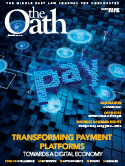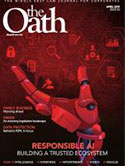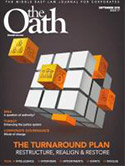The Impact of Digitalisation – Part 2

In last month’s edition, Kiran Scarr discussed the potential significance on trade for companies adopting a digital strategy. In the second part, the general counsel focuses on the implications of adopting technology on the construction industry.
It is important to focus first on viewing data as a commodity. There is increasing awareness of how much value rests in data; collecting it, digitising it and trading it. This value can be significant in the context of the construction and infrastructure sector. Information is imbedded in models, designs and drawings and becomes a primary asset that is traded. When this information is shared, design development becomes a collaborative, evolving process. Focus on such information as a tradable commodity opens up markets traditionally reserved for others (take, for instance, precision engineering in East Asia, Korea & Japan). When coupled with adoption of digital technologies as a core strategy, the results can be significant.
Take, for instance, the emergence of 3D printing technology, particularly Building Information Modelling (BIM). BIM is a form of information processing and collaboration whereby data is imbedded in one cohesive project model. It puts information management and data exchange in heart of the development process. It leaves behind the traditional method of design which evolves on an iterative basis through fixed stages of procedural input and approval. BIM is a platform through which data is brought together to form a coherent set of information by consultants and contractors coordinating and collaborating to create one fully integrated deliverable. It requires a project team to work cohesively. More fundamentally, it forces the project developer to shift its focus from individual team members’ accountability & responsibility for output to the project team’s overall commitment to a process. Some of the potential implications for a construction and infrastructure project would include:
- need for sharing of data files in respect of product design;
- shift in production closer to market;
- reduction in fixed costs;
- up-ends traditional model of scaled production (required to create economies of scale);
- allows production to occur locally;
- requires need for collaboration tools; project teams collaborating through technology (innovating) to produce greater results (building efficiencies, sustainability);
- design liability implications, as well as a moving feast for TMT lawyers;
- change in approach to risk-sharing in contracts & traditional procurement methods.
Dubai Municipality has made BIM mandatory on projects of a certain size, height or type and the UAE is currently considering UAE-wide adoption. This is highly commendable but requires greater support and commitment from all stakeholders in the construction & infrastructure sector. The future of trade in data as a commodity rests not with political will, but rather, a willingness of developers to mandate wide-scale adoption of digitalisation as a fundamental pillar of its construction and infrastructure projects. That is why DMCC is using BIM technology on all of its latest real estate projects.
It is my view that, the role of the development in digital technologies such as 3D printing as the single most important phenomenon of the past two decades cannot be overstated. The mandatory adoption of models that commoditise data such as BIM are revolutionising the construction and infrastructure sector and are the key to securing world leading innovative and sustainable projects.
Columnist:
Kiran Scarr, general counsel, DMCC














































































































